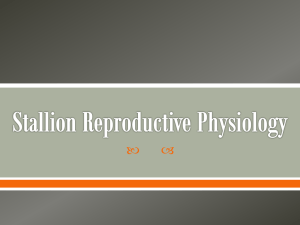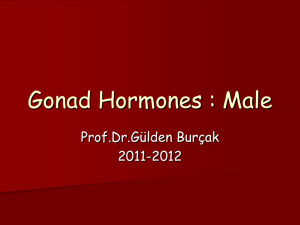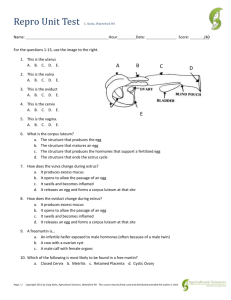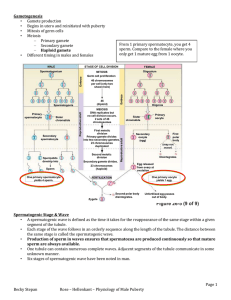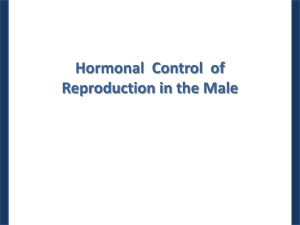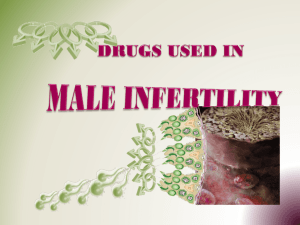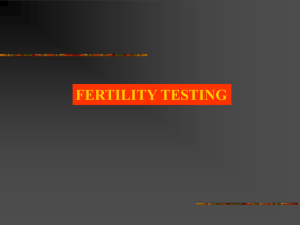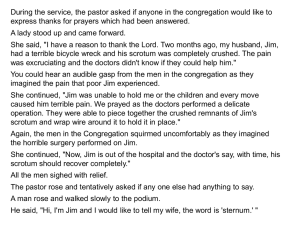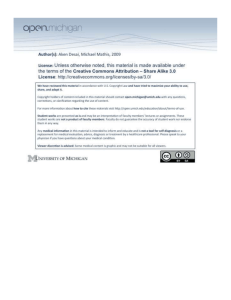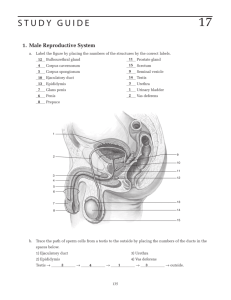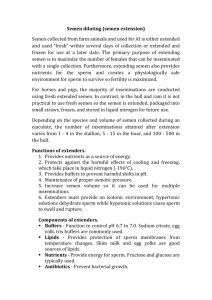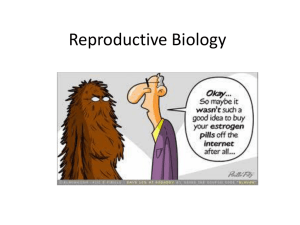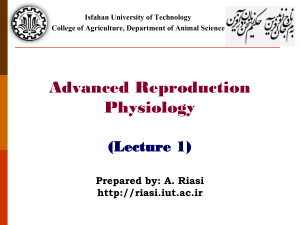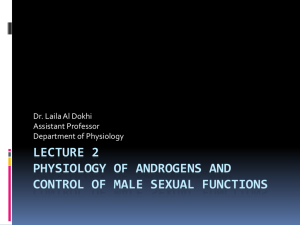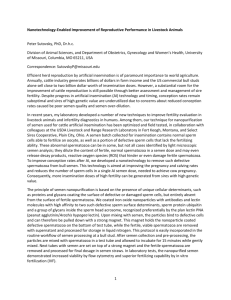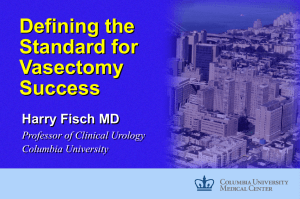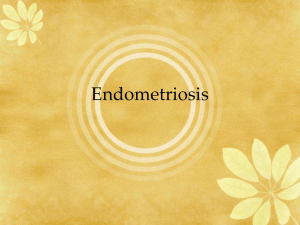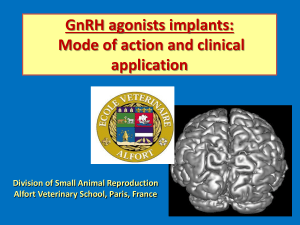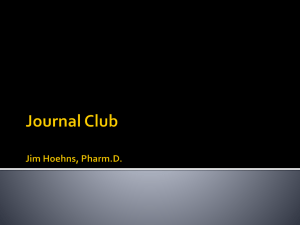Alternatives to castration in horses
advertisement
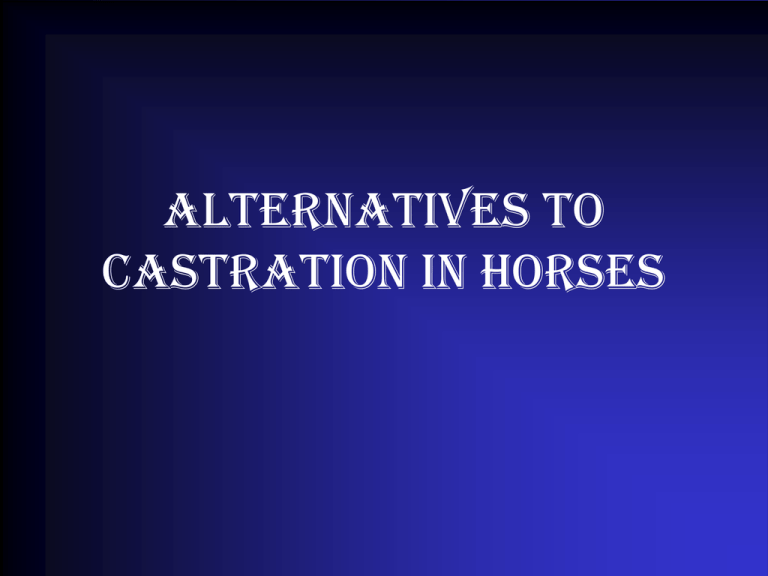
Alternatives to castration in horses Why castrate? • Aggressive behavior – Sex-related aggression – Dominance Related aggression • No distractions at shows – Will perform, with mares, in classes • Easier to manage – 5 ft vs. 7 ft fencing – Limited areas; can pasture with mares What are some alternatives? Progestin therapy GnRH vaccination Progestins • Progestins inhibit Leutenizing Hormone production • Results – – – – – Reduced Leydig cell activity Reduced testosterone levels in blood plasma Reduced ejaculate volume Reduced libido Reduced sperm production *Stephen J. Roberts (VT) & Bonnie V. Beaver (TX) Gonadotropin releasing hormone Objective: To investigate the effect of GnRH on testicular function The studies: The First Study • Six yearling colts were divided into three groups 1) control 2) subcutaneous & 3) intramuscular vaccination – They were fed to ensure adequate growth throughout study – Vaccinated against tetanus The first study • • • • Injections 2 cc of mineral oil based GnRH vaccine The control group: never injected The Subcutaneous group: emulsion on the side of neck • Intramuscular group: injection in the neck The first study • Measurements and Tests • *Jugular vein blood assayed before study for testosterone level and GnRH antibodies • *Scrotal diameters and body weights were measured prior to study • • • • • • • • Body weights and Blood assays Scrotal diameters and testicular lengths Blood samples Antibody Assays Semen Collection and Examination Daily sperm production Testis Histology Morphometric Analysis The Results • No weight differences 1.2 • Testosterone levels 1 • The treated colt’s – Testes failed to grow during first 32 weeks – Irregular groups of Leydig cells – Reduced volume of semineferous tubules – Reducd Leydig cell volume *No “P” values given Control S.C. I.M. 0.8 0.6 0.4 0.2 0 8 24 40 56 72 Wks Wks Wks Wks Wks The Second Study • Twelve 2-year-old colts divided into two groups: 1) 200 mg dose 2) 400 mg dose of water based GnRH vaccine – They were run in paddocks and fed to maintain condition – Vaccinated against strangles and tetanus The Second Study • Injections: given Intramuscularly • *Water based vaccine vs • *Mineral Oil based vaccine • Lesions • Soreness • Scarring The Second Study • Measurements and Tests • Testosterone concentrations and semen quality assessed before trial • Body Weights • Testicular widths and lengths • Blood samples • Testosterone concentrations • Antibody assays • Semen examination • Libido Results • Vaccination Dose on body weight and testicular dimensions Semen – Not significantly different Characteristics 200mg 400mg (P>0.05) • Only slight swelling at site Live, Normal Sperm (%) • Vaccination dose on semen characteristics – Significantly different in percentage of live, normal sperm (P<0.05) • No significant effects on antibody titres or testosterone levels – (P>0.05) • Displayed gelding-like behavior 38.7 52.1 Sperm Concentration (106/mL) 319.4 294.0 Total # of Sperm (106) 4729 3893 The Third Study • Four standardbred stallions: 3 treated and 1 control • Vaccinated with water soluble GnRH vaccine – Kept in paddocks during day & stalls at night *September to January The Third Study • • • • • • • Measurements and Tests Hormone assays Semen collection & behavior Semen evaluation Testes examination Testicular histology Site examination Results Stallion Time Week 13 Before Min:sec A 8:08 9:19 B 2:57 11:59 C 1:08 6:50 D 3:05 7:58 • Testosterone levels decreased, but varied by individual • Libido decreased • # of mounts increased • Time in collection room increased • Interest in tease mare decreased No “P” values were given Conclusion • Immunocastration IS an alternative to castration • Needs more research • May become the norm in the race and show horse industries • DEFINITELY WORTH LOOKING INTO

